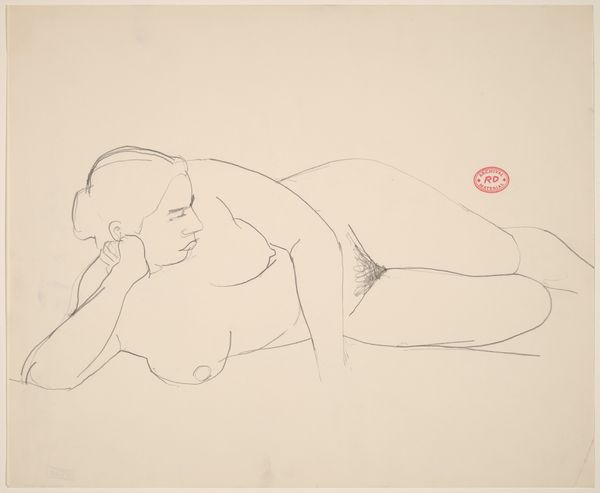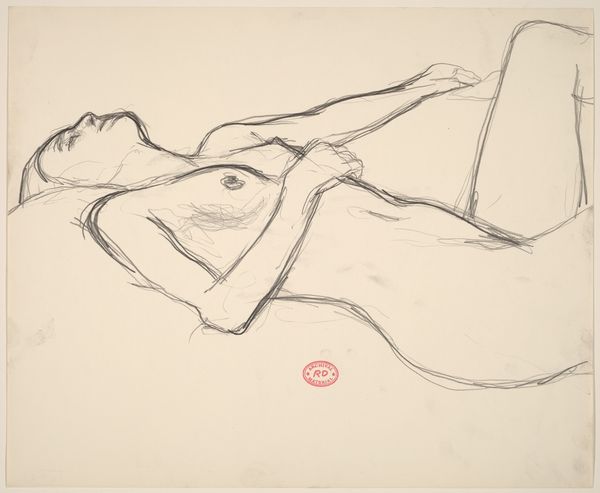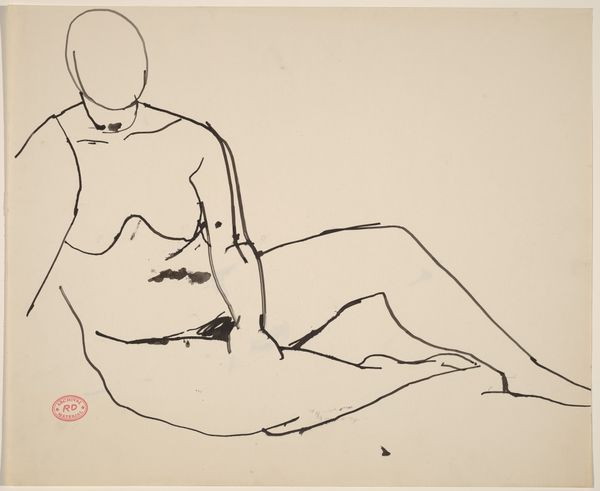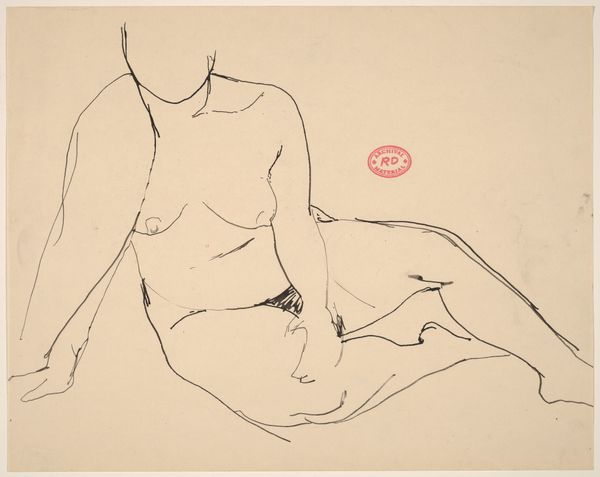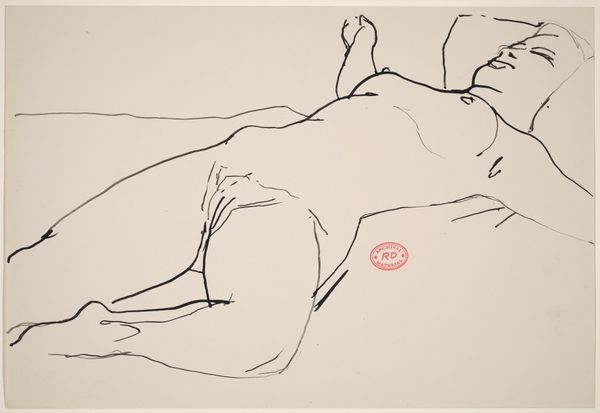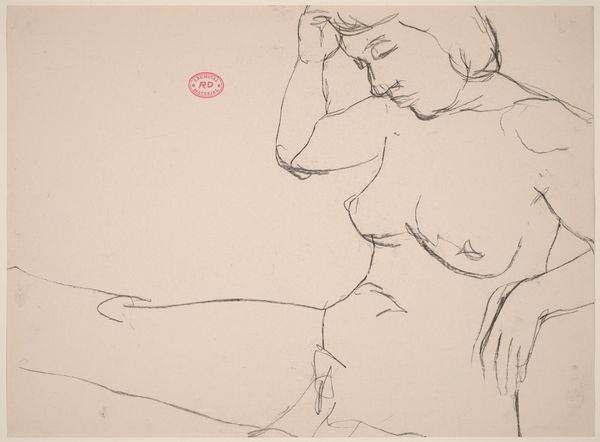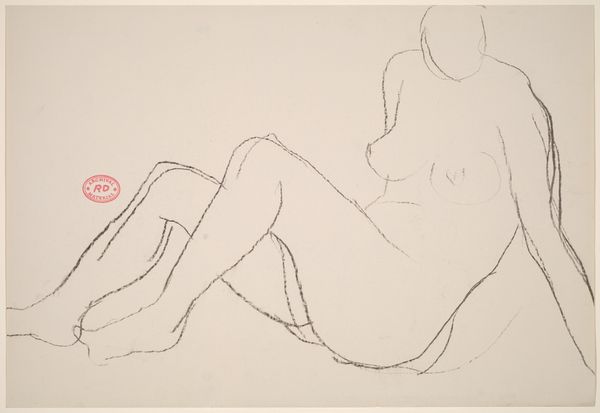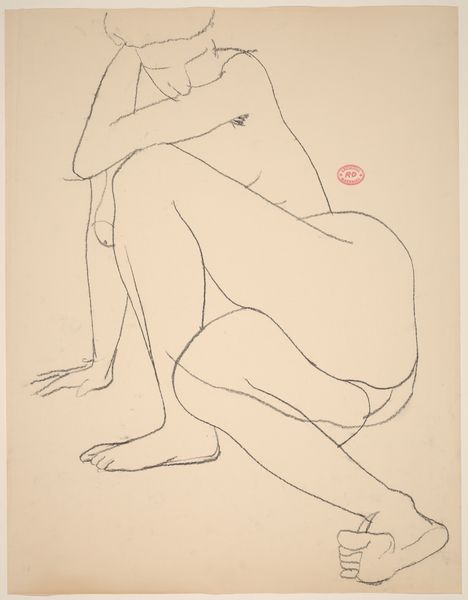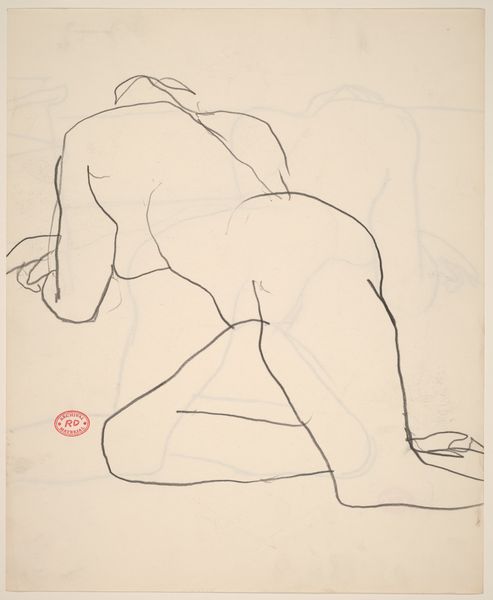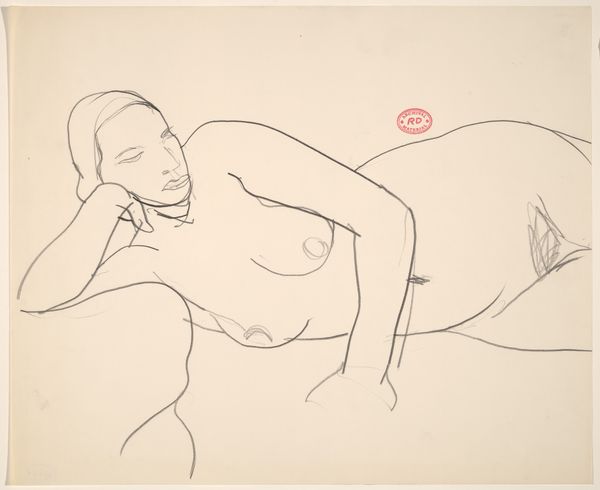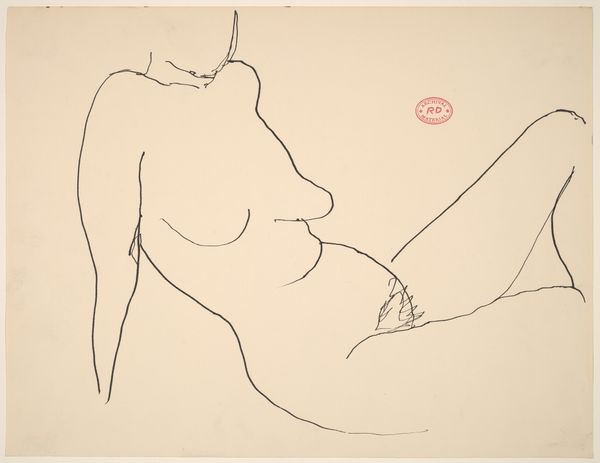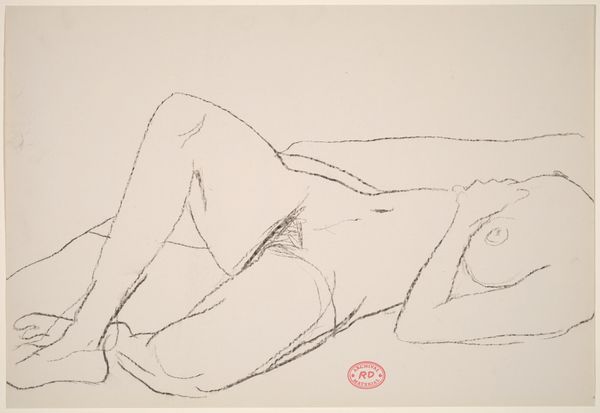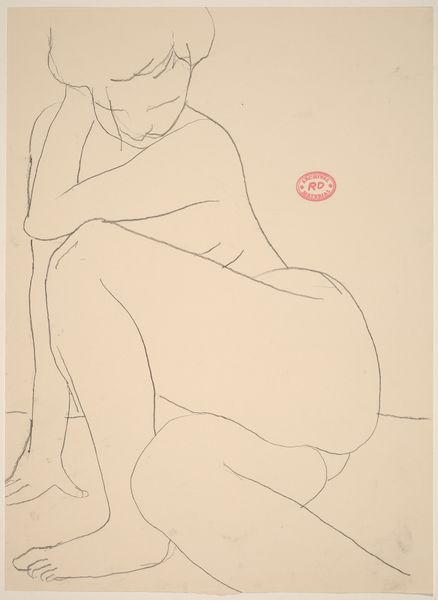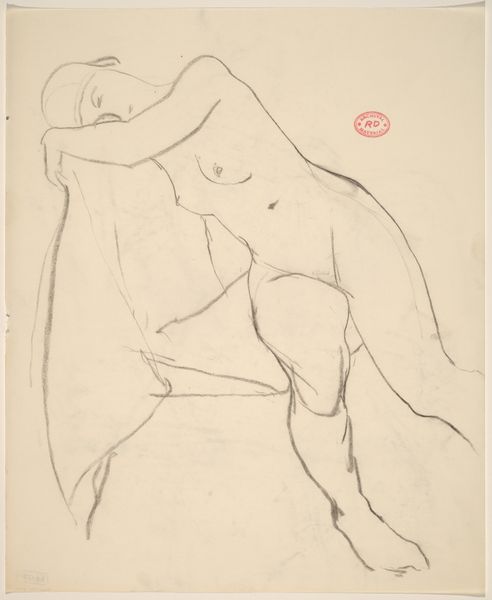![Untitled [reclining female nude resting on left arm] by Richard Diebenkorn](/_next/image?url=https%3A%2F%2Fd2w8kbdekdi1gv.cloudfront.net%2FeyJidWNrZXQiOiAiYXJ0ZXJhLWltYWdlcy1idWNrZXQiLCAia2V5IjogImFydHdvcmtzL2U1N2UxZWFkLTY1MjktNDNiOS05MjY2LTI5MjIzZTNiMDQ5MC9lNTdlMWVhZC02NTI5LTQzYjktOTI2Ni0yOTIyM2UzYjA0OTBfZnVsbC5qcGciLCAiZWRpdHMiOiB7InJlc2l6ZSI6IHsid2lkdGgiOiAxOTIwLCAiaGVpZ2h0IjogMTkyMCwgImZpdCI6ICJpbnNpZGUifX19&w=3840&q=75)
Untitled [reclining female nude resting on left arm] 1955 - 1967
0:00
0:00
drawing, pencil
#
abstract-expressionism
#
drawing
#
figuration
#
form
#
bay-area-figurative-movement
#
pencil drawing
#
pencil
#
abstraction
#
line
#
nude
Dimensions: sheet: 35.6 x 43.2 cm (14 x 17 in.)
Copyright: National Gallery of Art: CC0 1.0
Curator: Looking at this evocative sketch, made with pencil on paper, we see Richard Diebenkorn’s “Untitled [reclining female nude resting on left arm],” dating from somewhere between 1955 and 1967. What’s your immediate response to it? Editor: There’s a vulnerability here, a raw intimacy in the loose, almost hesitant lines. The face is absent, almost erased, pushing the focus onto the body and its posture, which strikes me as simultaneously relaxed and… burdened. Curator: Burdened, interesting choice of word. Considering Diebenkorn’s engagement with Abstract Expressionism and then later with figuration, one could argue that his exploration of the nude is inextricably linked to the broader socio-political landscape of the mid-20th century, particularly the evolving representation of women. Editor: Exactly. I wonder about the lack of a face. Is it an act of erasure, denying individuality, or does it perhaps invite us, especially as women viewers, to project ourselves onto this form, to recognize the universal experiences of womanhood? Curator: That is definitely one way to read it, and considering Diebenkorn's art world positioning, particularly the prevalence of the male gaze at that time, it's interesting to think about what message Diebenkorn sought to convey, if any. Was it challenging the patriarchy or supporting it through yet another portrayal of a nude woman for public consumption? Editor: It's precisely that tension that fascinates me. The sketch exists in this space between objectification and potential empowerment, a duality that reflects the complexity of female representation throughout art history and our evolving understanding of gender and identity. What about his choice of lines, thin and delicate for the outline but more frantic for details like the groin area, which adds a peculiar feeling of internal struggle? Curator: This layering and the contrasting styles do introduce conflicting visual statements and prompt interpretation that leaves the work as a political paradox of both presence and absence. Editor: Ultimately, this artwork invites us to engage in a critical dialogue about how we interpret the female form. Curator: Precisely, by encouraging thoughtful engagement with historical, social, and artistic contexts. Editor: The experience really underlines art’s potential to open dialogues about uncomfortable truths and enduring societal challenges.
Comments
No comments
Be the first to comment and join the conversation on the ultimate creative platform.
